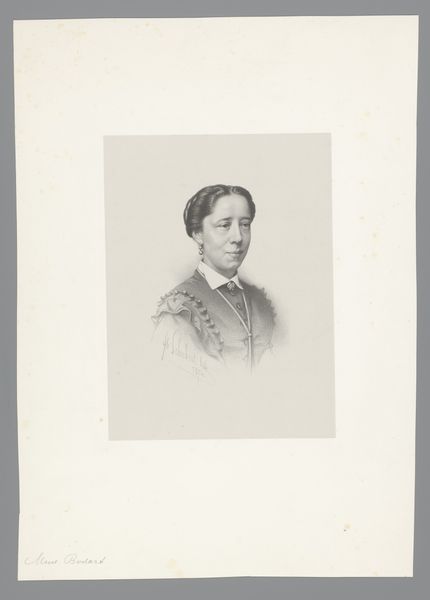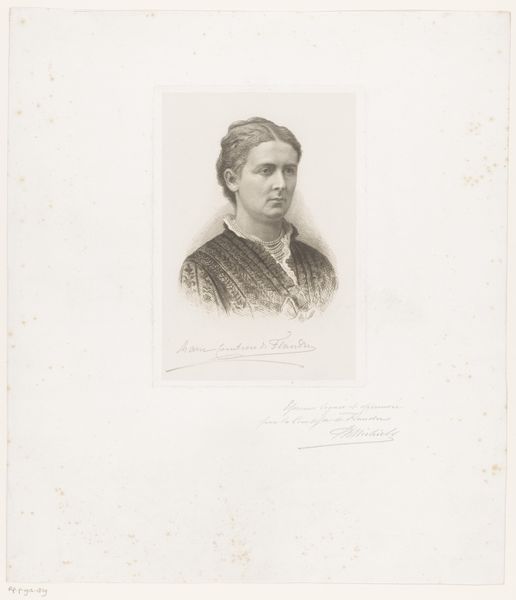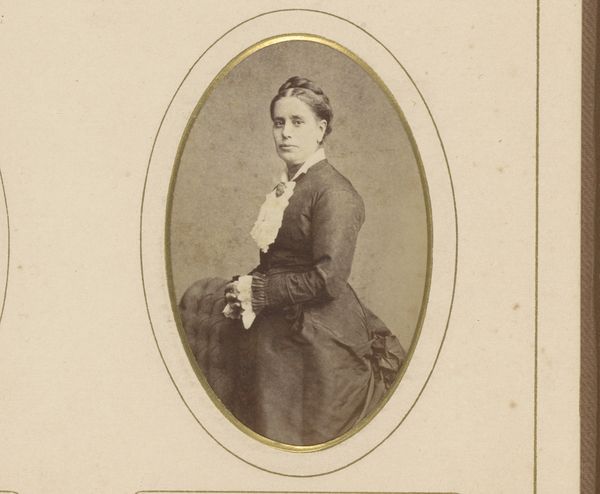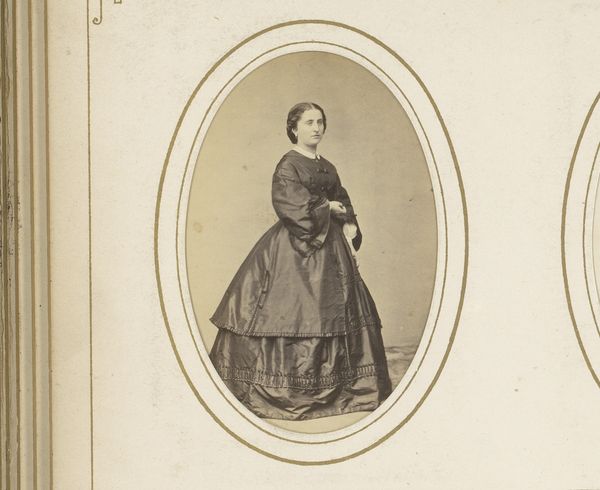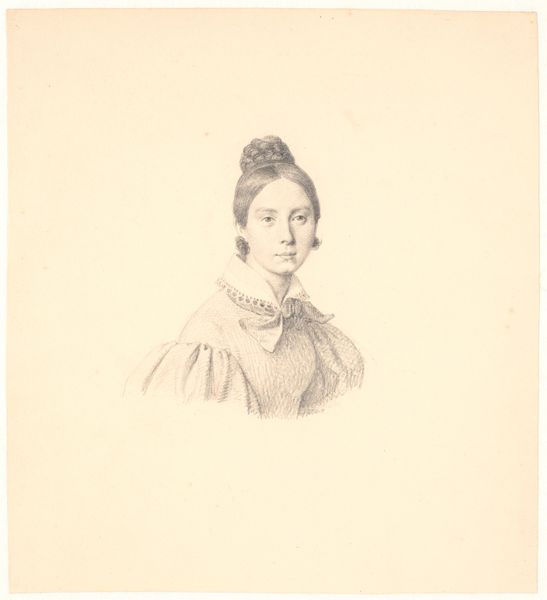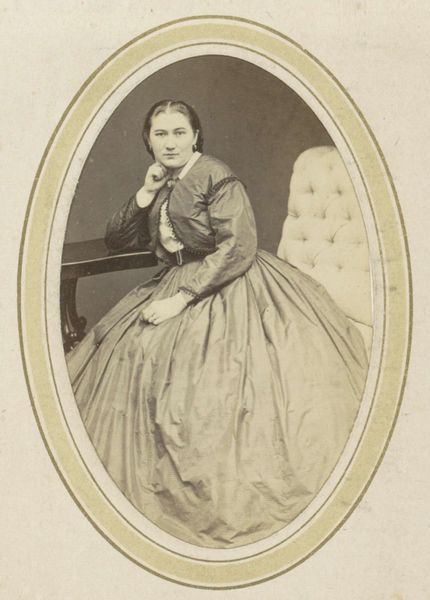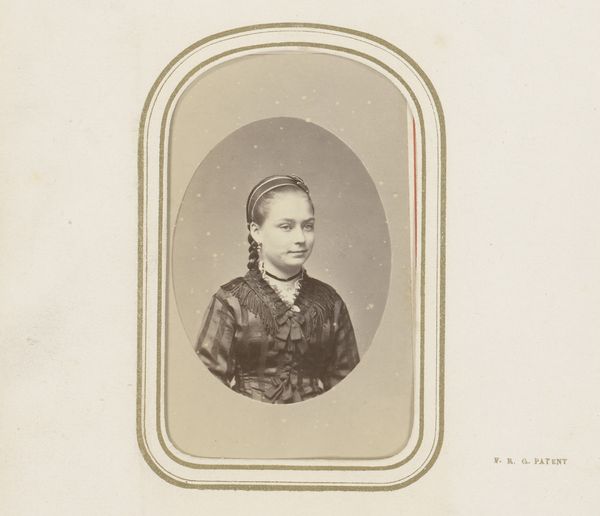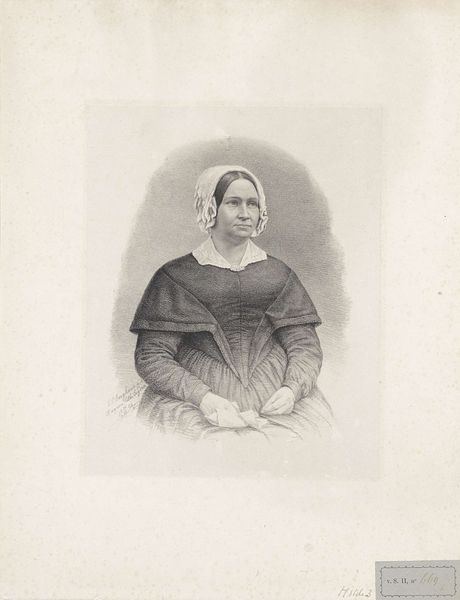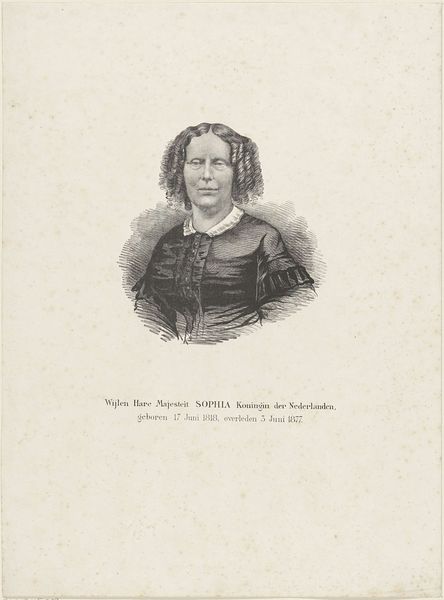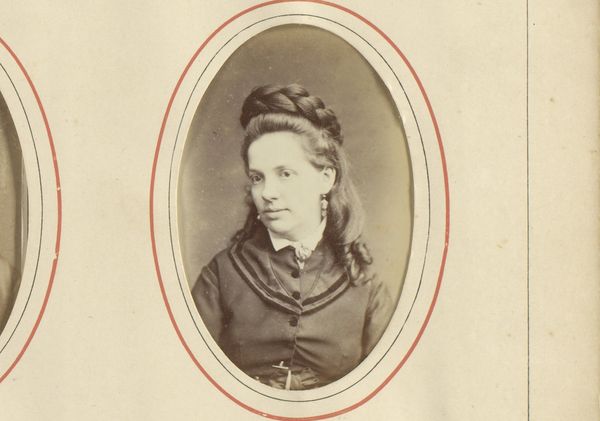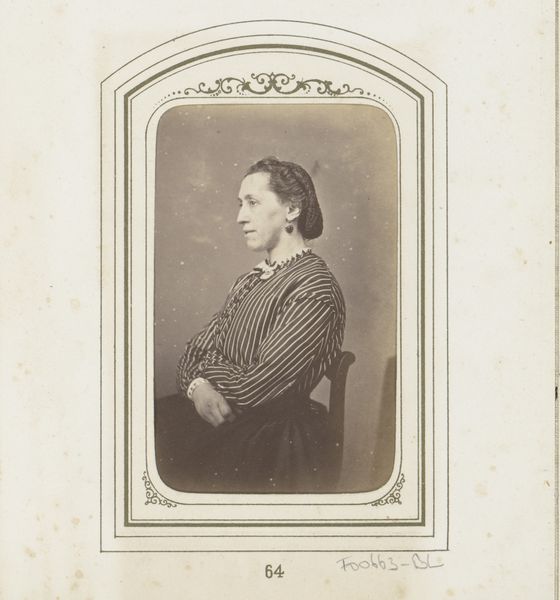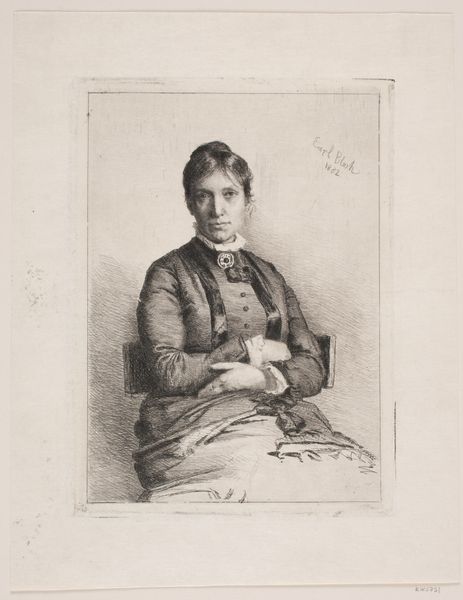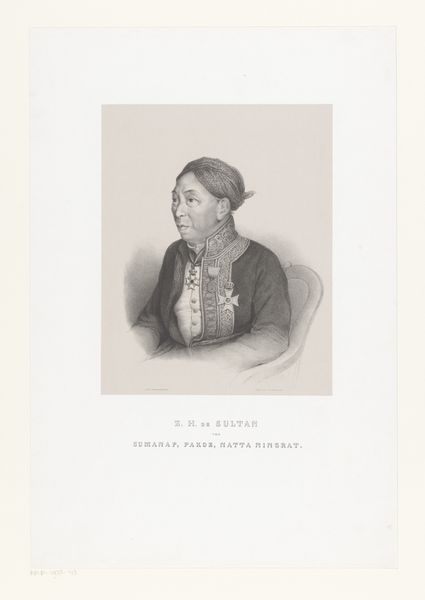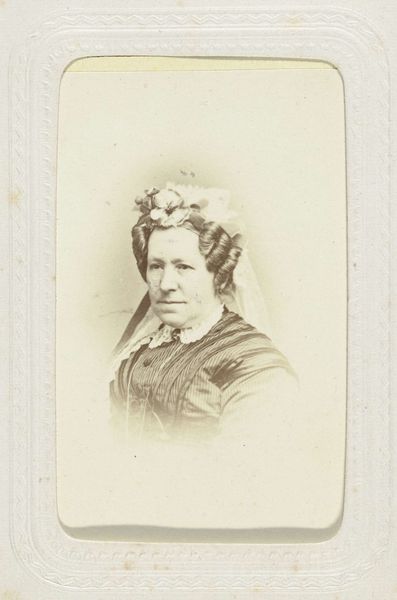
#
pencil drawn
#
photo of handprinted image
#
shape in negative space
#
light pencil work
#
photo restoration
#
light coloured
#
negative
#
pencil drawing
#
tonal art
#
positive shape
Dimensions: height 546 mm, width 430 mm
Copyright: Rijks Museum: Open Domain
Editor: This is a portrait of Princess Helena of Saxe-Coburg, made between 1856 and 1867 by Adrien Canelle. It’s a very delicate drawing, rendered in what seems to be pencil. What stands out to me is the somewhat severe yet serene mood it conveys. What do you see in this portrait? Curator: I'm immediately drawn to the cross she wears. It's not just ornamentation; in this context, it speaks to cultural values and the symbolic weight carried by royalty. Consider the history swirling around this object - what do we know about Helena's era? How do ideas about piety, duty, and social standing get embedded into such portraits through such icons? Editor: I see what you mean. So the cross and the style of the portrait reflect the cultural values associated with royalty in that period? Curator: Precisely. And look closer at the way the artist used light. The light pencil work highlights her face and cross. But also see how light and shadow play to express internal qualities? Do you get a sense of duty, constraint, maybe even longing, encoded in that subtle tonal range? How do you see those symbolic tools operating here? Editor: I didn't think of the lighting having symbolic value itself, I just thought it was to create form! But thinking about the cultural context of her as a princess, the soft lighting does create this serene but trapped impression. Curator: It's like reading a visual language. Over time, certain motifs and representational strategies accumulate layers of cultural memory. So, next time you see a cross, don't just see a shape, see an entire history condensed. It makes portraiture such a fascinating study. Editor: That’s a great point! I’ll definitely think about historical and cultural context more carefully when I look at portraits in the future. Curator: And that sensitivity to symbolic language enriches not just how you view art, but how you navigate the world around you.
Comments
No comments
Be the first to comment and join the conversation on the ultimate creative platform.
